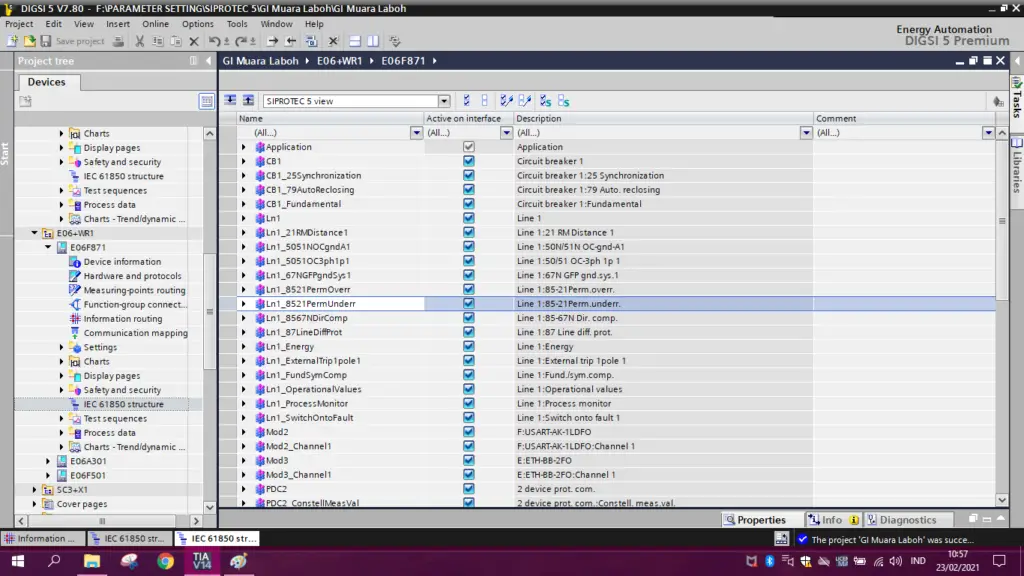
History of IEC-61850 and why do we use this protocol?
IEC 61850 is a standard for communication networks and systems in electrical power generation, transmission, and distribution. It was developed by the International Electrotechnical Commission (IEC) in 2004, and it has since become widely adopted in the power industry.
The history of IEC 61850 dates back to the 1990s when the power industry was transitioning from analog to digital systems. At the time, different manufacturers had their own proprietary communication protocols, which made it difficult to integrate systems from different manufacturers. To address this challenge, the IEC formed a technical committee (TC57) to develop a standard for communication in power systems.
Read Also: What is the difference between IED and RTU?
The initial version of IEC 61850 was published in 2004, and it focused on communication between intelligent electronic devices (IEDs) in substations. It defined a standardized language and protocols for exchanging information between IEDs, such as protection relays, meters, and controllers.
The IEC 61850, developed by the International Electrotechnical Commission in 2004, started off as a standard for communication within substations. It admirably filled a gap within the power industry, which was transitioning from analogue to digital systems and struggling to manage an array of incompatible communication protocols from various manufacturers. Significantly, it set down standardised language and protocols this allowed a seamless exchange of information between intelligent electronic devices such as relays, metres and controllers. This initially involved only substation communication but since then, its efficacy has recognised, leading it to be adopted for communication between substations and control centres as well. Additionally, it swiftly came to incorporate advanced features such as time synchronisation, cybersecurity and support for sophisticated applications such as synchrophasors and wide-area monitoring systems. This has undeniably simplified system integration, design and improved efficiency and performance, leading to a more reliable power grid. Crucially, both wired and wireless communications can occur on varied networks, providing real-time exchange of data and enhancing the control and monitoring of power systems. The advanced features of the IEC 61850 assist in integrating renewable energy sources, enhancing grid stability and managing power flow. In the light of increasing cyber threats, its robust security features provide all-important protection. This makes it an essential component in the power industry that's worth knowing about.
Today, IEC 61850 is widely adopted in the power industry, with many new substations and systems being designed to comply with the standard. It has helped to reduce the complexity of integrating systems from different manufacturers and has enabled advanced applications that improve the efficiency and reliability of the power grid.
The reason why we use the IEC-61850 Protocol:

The IEC 61850 is used in the power industry for several reasons, including:
- Standardization: IEC 61850 provides a standardized language and protocols for communication between intelligent electronic devices (IEDs) in power systems. This standardization reduces the complexity of integrating systems from different manufacturers, simplifies system design and maintenance, and improves interoperability between devices.
- Flexibility: IEC 61850 is a flexible standard that can be used in a wide range of applications, from communication between devices within a substation to communication between substations and control centers. It can also support various types of networks, such as Ethernet and fiber-optic networks, and can be used for both wired and wireless communication.
- Improved efficiency: IEC 61850 enables the exchange of real-time information between devices, allowing for more efficient monitoring and control of power systems. This improves system performance, reduces downtime, and enables faster response to faults and outages.
- Advanced functionality: IEC 61850 supports advanced functions such as synchrophasors and wide-area monitoring systems, which provide real-time information about the state of the power grid. This information can be used to improve system stability, enable better power flow management, and enhance the integration of renewable energy sources.
- Cybersecurity: IEC 61850 includes security features to protect against cyber threats, such as data encryption, authentication, and access control. This helps to ensure the reliability and safety of power systems.
What is Remote Terminal Unit? A Basic Guide
Overall, the use of IEC 61850 in power systems can lead to improved system performance, increased reliability, and reduced maintenance costs. It also enables the integration of advanced applications and technologies that support the transition to a more sustainable and resilient power grid.

You must be logged in to post a comment.